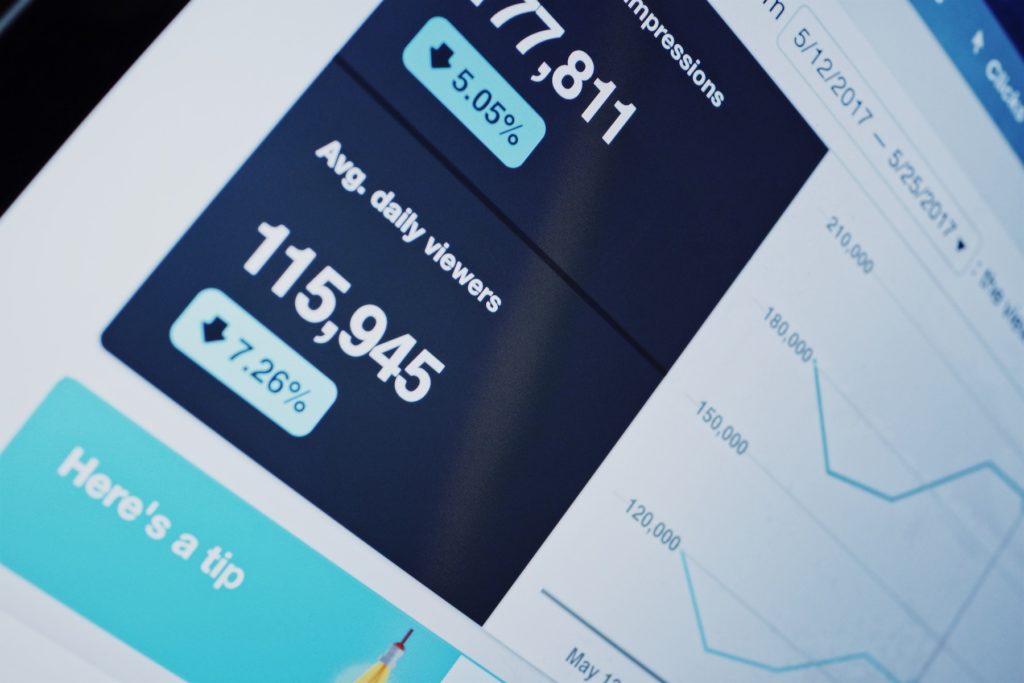As a web designer, I’ve come to think of launching projects differently over the years. I wanted to share with you this process and its benefits. It leads to more efficiency as well as better project management. However, the biggest reason I want to share it with you is that this copy-first approach yield significantly higher results specifically around conversion rates.
1. Successful projects need clearly defined goals
I start off all projects by establishing clear goals first. They can be categorized into business goals and customer goals. Although this isn’t exclusive to the copy-first approach, it’s crucial for running more successful campaigns.
In collaboration with my clients, we pick specific goals for their campaign.
Since marketing campaigns usually are specific to some kind of goal or launch, it makes the most sense to have one clear business goal for them. Whereas a website or brand redesign is much larger and encompasses the whole business, it does give us an opportunity to have multiple goals. But, since this is about marketing campaigns, I’ll keep the rest of the article with those in mind.
Business goals
What kind of business goals? It varies, of course. However, here are a few different examples:
- Sell out a live event
- Sell 10 3-month coaching spots
- Gain 10% in email newsletter signups
- 500 freebie downloads
Depending on the structure and duration of the campaign, these goals would be measured over time or within the life of the campaign. For example, an ongoing campaign that focuses on growing a client’s email list would be measured over time. Where a 3-week webinar campaign would be measured within those 3 weeks.
Customer goals
Customer goals can range significantly depending on the needs and habits of your target audience. Picking a single pain point and value offered for a marketing campaign is essential here too. For example:
- Pain point: spending too much and being in debt
- Value: a 6-point financial plan that teaches them financial literacy
- Pain point: Poor time management and unreached professional goals
- Value: Improved mindset and goal planning that helps them find their first high paying client in 60 days
- Pain point: No support dealing with their anxiety
- Value: A small but reliable support group to help them manage anxiety
For each pain point and value, there could be smaller sub-points. Going with the anxiety example, your target audience could be looking for support with depression, looking for mindset help, and getting their shit together personally and professionally.
You see, when people visit any site on the Internet, they really don’t care how fabulous your product or service is. They don’t want to know about the amazing features, the multiple ways this thing can be used, or whatever else you’re trying to tell them. They simply want to know how your product (or service) will make their lives better.
Madeline Blasberg, 7 Landing Page Copy Hacks (That the Pros Know by Heart)
There two simple questions help me, and my clients find out the overall customer goals for each of our campaigns: what does your customer get and why do they need it?
Benefit of the copy-first approach and goal setting
Every project, no matter how you approach it, needs to have clearly defined goals ahead of time. And as you read on you will see how these goals affect the copy-first approach. Spoiler: it lets you check how you’re doing and what you’re launching while the campaign is being developed.
2. Write the first draft of the copy
As the term suggests, the copy-first approach just means that you start your project by writing out a rough draft of the copy before doing anything else. This is what makes this approach special. Everything in this article that follows only benefits if the copy is written out first.
It doesn’t matter who does it. If it’s me, my client or a hired copywriter. It doesn’t need to be perfect, but it needs to cover the whole scope of the project. So yes, if it’s a brand new website, the copy for all the pages needs to be drafted. It’s a lot, but I’ve done it before. The results are worth it. It’s a lot easier when it’s just a landing page because it’s just a lot less work overall!

While writing the copy, it’s also important to point out any content that will go along with it. Will there be pictures? Videos? PDFs? Where will these content assets go and what will they be made up of? Although it’s not necessary to start crafting these assets at this point, it is important to define them.
I find that content planning alongside copywriting comes very naturally. It opens up the conversation easily.
Optimizing your campaigns
Now that the copy draft is available it’s easy to check it against the campaign goals! The drafted copy lets you see the sales funnel clearer. If the intended content doesn’t fit or reflect the setout business and customer goals, it’s time to rewrite it.
3. Declutter and cut
The thing about copy specifically is that there is more of it than needs to be. Usually. There is a well know quote within the design and tech community from Steve Krug: “Get rid of half the words on each page, then get rid of half of what’s left.” There are numerous benefits to cutting down your copy by 75%, as suggested by Krug.
Bank on the visitor not sticking around
First, people’s attention spans suck! I know for a fact even you don’t enjoy reading long paragraphs online. In general, people don’t like reading long texts on the internet so much so that it reshaped the length of paragraphs. Notice at the ones you’re reading right now, in this article, and on most blogs are significantly shorter than in books.
The reason people’s attention spans suck online is rooted in psychology. By now people are so used to not reading long texts (on their computers), it’s hard to force them to do so. This means we must work with this, not against it. Short headlines and body copy will be easier for visitors to digest, making it more appealing to them.
Don’t make a visitor work
Second, by giving people a lot to read you’re giving them a task. As a business, it’s your job to make it easier on your prospects. It’s not their faults they were overwhelmed by your website, it’s yours. Accepting this makes gives you an opportunity for an advantage. The less work a visitor has to do on your website, the better. Cutting the copy down by 75%, removing everything that’s nonessential and that doesn’t help achieve your goals gives visitors less to work through.

High bounce rates are made up primarily from people not realizing this is where they want/need to be. If they are overwhelmed and not interested by a landing page, they won’t realize they are in the right place in time.
To the point, FTW!
This brings me to the third benefit. Shorter copy forces you to get to the point right away. And, establishing a connection is the way to convert. When the path to purchase – or a free signup – is streamlined and shortened, you will get more conversions. All this leads to a more efficient campaign with better results.
When Saxo bank made their PPC landing page more relevant and focused on their value proposition, conversion increased by 48.4%.
Henneke Duistermaat, Cut the Crap: 6 Landing Page Conversion Killers and How to Avoid Them
The beautiful thing about cutting copy is that you will also naturally end up cutting the overall content as well. Removing whole pages in a website launch is okay. And, it’s okay to cut sections out of landing page if it will help it convert more. Don’t you think?
4. No scope creep
The nature of the copy-first approach is to set clear expectations and keep the campaign goals in check. This makes scope creep almost impossible. Personally, I’ve yet to experience it while using the copy-first approach.
Of course, edits and tweaks happen, but they are aimed at optimization, not oversight or wrong expectations.
Quicker launch
Sometimes, when the copy is cut down significantly, it frees up time in the project. That’s because when you cut a section on a landing page (or a whole page from a website) which didn’t fit the goals frees up time for everyone involved to launch the project sooner.
The drafting the copy first forces us to think through the campaign in great detail, brainstorm ideas and everything we want to include in the campaign as were composing the copy.
Therefore, when something gets cut, we don’t come up with additional things to take up the time to replace the cut content. Instead, my clients and I have a choice to make. We either give the free time to another area of the project such as more visual design time, move up the launch or use the additional time as a buffer in case something else takes a bit longer.

The ability to be on or ahead of schedule is such a relief. It allows you to launch your campaigns (or websites) with less stress. Being rushed is no way to live nor to launch anything. It’s an incredible benefit of the copy-first approach that I wouldn’t trade for the world!
5. Check against the branding
By now, the copy and content assets (such as pictures) have been optimized for goals and cut down. Now is a good time in the project to check the copy and content against your brand. Branding is important because it sets a tone unique to your company. When the copy isn’t optimized for this, it deviates from branding. Having a poorly aligned energy and tone of voice can result in lower conversions. It sends mixed signals and confuses people.
According to Direct Marketing News, 63% of people say that brand consistency plays a role in their spending. In fact, 34% of respondents claim they’re willing to spend more on a brand that is consistent in its messaging across channels, and 39% of people say they spend less on inconsistent ones.
Saranya Babu, How to Apply Brand Marketing Principles to Your Landing Pagesh
It’s like having a friend who one day is easy going and kind then serious and aloof the next day without any reason or context for the change. It’s weird. We don’t like those kinds of people and stop spending time with them. People view companies and brands in the same way. That’s because we see brands as having a personality. So, a brand with inconsistent messaging and tone will resonate less with its target audience leading to lower conversion rates and lesser business results.
It’s not a siloed process
Before I wrap this article up, I’d like to point out one thing about the copy-first approach. The idea isn’t to work on the copy alone until it’s perfect before moving on. After the initial draft is presented the conversations keep going on how to optimize it for the campaign. Because the content plan accompanies the draft, it’s a good time to start jumping into other areas of the project. You can start on asset creation such as sourcing images. Or, you can start talking about traffic flow, sales funnels, visual design or even how to set up the dev environment so that the engineers are ready to as the project progresses.

The takeaway
Taking the copy-first approach makes for more efficient and effective launches. Revisions and scope creep are down to the minimum. Thinking about user
All of this adds up to higher conversion rates, lower bounce rates, improved brand perception, and customer loyalty. Meaning you get to influence and reach more people and bring in more revenue.


